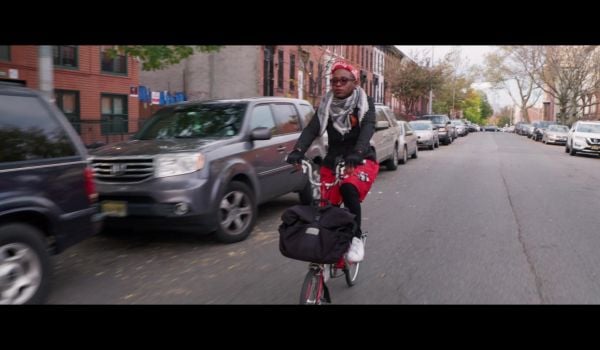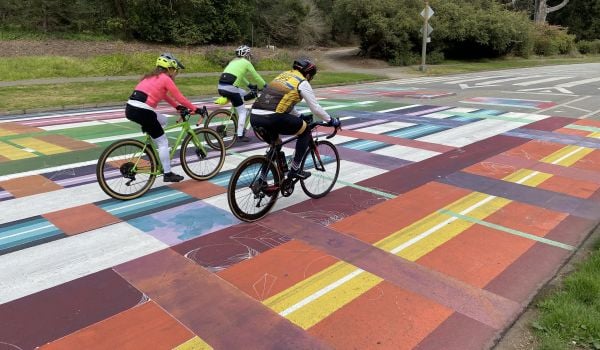In the era of two-day, same day, and even 30-minute delivery options for everything from toothpaste to wedding dresses, we tend to envision the world of increasingly rapid delivery as powered by drones that take to the air and drop orders off much the way that fictional storks deliver babies—right at your doorstep. However, chances are that—at least in the more immediate future—our deliveries are going to come to us in a more familiar way: by ground.
Often casually referred to as sidewalk robots, these “personal delivery devices” are electrically powered devices designed to deliver cargo locally. They’re equipped with automated driving technologies that allow them to operate with or without the remote support or supervision of a human. The products of companies spearheading the technology, like Starship and Amazon have devices that consist of a container on wheels that weigh in at roughly 100 pounds unloaded and roam at a pace of around one to three miles per hour. FedEx has a delivery robot as well—it’s a bit larger, heavier, and faster, rolling along at up to 10 miles per hour. Since 2017, 32 PDD bills have been introduced across 27 different states. Twenty one states have passed laws legalizing the use of at least some of these delivery robots on sidewalks.
But all these delivery robots move through the same pedestrian spaces that people do — think sidewalks, bike lanes, and crosswalks. They’ll be interacting with everything from people, dogs, people who use mobility devices, cyclists, cars, scooters, children, and more. While they may offer innovative deliveries of the future, Michael Clamann, a senior human factors engineer at the University of North Carolina’s Highway Safety Research Center who focuses on safety and federal legislation, has concerns surrounding the safety of PDDs, particularly when it comes to crash reporting and responsibility.
“I certainly don’t think that any of these companies would want or expect that someone would be pinned up against a wall by one of the larger PDDs, but I haven’t seen anything in the design that would prevent that from happening compared to industrial robots,” he says.
Based on regulations to date, PDDs are generally restricted to speeds between 3.5 and 12 miles per hour on sidewalks and 10 to 25 miles per hour on the shoulder of a road and must keep their unloaded weight between 80 and 100 pounds. They’re generally allowed to run on sidewalks, crosswalks, and on shoulders; some type of human oversight is usually required; and they’re often required to yield the right of way to pedestrians. Hazardous materials are typically not allowed and insurance requirements tend to hover around the $100,000 mark.
However, for Clamann, who took note of these devices last April when he heard North Carolina was considering legislation for the introduction of personal delivery devices, which ultimately passed, a number of unanswered questions remain. Because there are no federal safety guidelines in place, the decisions fall to the states and, Clamann says, often these legislative discussions are only attended by the technology companies behind the robots with local community groups and the like missing.
Only two states — Washington and Pennsylvania — require PDD companies to report crashes, so in general, it’s hard to get a sense of how often these robots are causing problems. Despite the lack of crash data, Clamann remains concerned. “Sensors fail, they degrade and they get dirty,” he says. “Machine learning algorithms fail and that’s what leads to certain collisions.” Even warehouse robots, which do have safety standards and have features like intent displays that communicate what their next moves will be, have had crashes that led to fires. One Amazon robot showered 24 workers with bear spray. Delivery robots, which are smaller than most warehouse robots, are less likely to be quite that dangerous, but still have the potential to cause some mayhem. After all, e-scooters are small, too, and they’ve sparked fires and numerous injuries.
Then there are the more generalized concerns that technology researchers have regarding artificial intelligence in general. How well will PDDs be able to recognize people with darker skin tones? Existing algorithms in other domains of technology — from Snapchat filters to self-driving cars — have been shown to have more difficulty recognizing people with darker skin. What about people who use wheelchairs or walkers or those with audio or visual disabilities?
Because wheelchairs need extra room to maneuver compared to people on foot and sidewalks and curb cuts shrink in areas where snow piles up for several months of the year, Clamann sees potentially increased danger for those with different abilities. Further, many delivery robots have lights, but there’s no requirement for audio warnings, leaving those with visual impairments in a precarious place.
If the companies behind these technologies released more information on how they’re testing these devices and what they’re learning, Clamann believes that legislators at all levels will be better able to regulate them in a way that effectively protects pedestrian safety as well as clearly outlines responsibility in the event of an accident in a way that doesn’t leave victims in the fray.
For their part, the companies say these robots are safe; Starship says their devices are “inherently safe and can navigate around objects and people;” FedEx said in a press release that its hardware is built on an existing robotics platform “with more than 10 million hours of reliable, real-world operation.”
Another concern around delivery robots is their potential to displace delivery driver jobs if they become widespread. That was the driving force between proposed legislation in Oregon to both regulate PDDs as well as develop a taskforce to make further legislative recommendations. While the legislation introduced by state Representative Rob Nosse — a Democrat and former labor organizer — in conjunction with the Teamsters ultimately failed, he expects that the legislature will see it again.
“The Teamsters are not a fan of these kinds of devices being all over the place because they worry that they will take away delivery and truck driving jobs in their membership,” Nosse says. “We wanted to put [legislation] in place to make it either difficult to do, or if it is going to exist, it has to be safe—very, very safe—and would not displace very many workers.”
Despite the failure of Nosse’s legislation, it’s exactly this kind of oversight that Clamann says is necessary. He encourages cities to get involved with state PDD legislation that’s in the works and believes that it’ll be necessary for the law to require that companies develop and follow common interaction standards, test their technologies in the communities where they’ll be deployed, report crashes, and have sufficient insurance and clear responsibility parameters in place for when crashes to take place.
Ultimately, “someone has to have authority on when PDDs can be stopped,” Clamann says. “Local municipalities should be allowed to make them stop operating in a particular area.”

Cinnamon Janzer is a freelance journalist based in Minneapolis. Her work has appeared in National Geographic, U.S. News & World Report, Rewire.news, and more. She holds an MA in Social Design, with a specialization in intervention design, from the Maryland Institute College of Art and a BA in Cultural Anthropology and Fine Art from the University of Minnesota, Twin Cities.
Follow Cinnamon .(JavaScript must be enabled to view this email address)
















